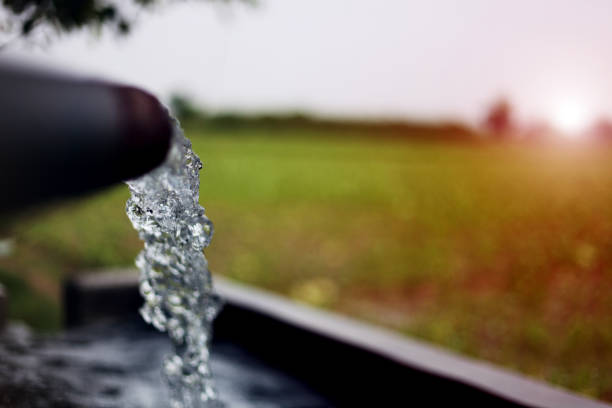News Highlight
The Union government on Tuesday launched a mobile application (Jaldoot) to capture data on the rapidly declining water table.
Key Takeaway
- The app has been jointly developed by the Ministry of Rural Development and Panchayati Raj.
Jaldoot App
- The app will capture the water levels of two or three open wells in every village twice a year.
- This mobile app will work in both online and offline modes. So water levels can be captured even without internet connectivity, and captured data will be stored on mobile. Data will synchronise with the central server when the mobile comes into the connectivity area.
- The regular data to be input by the Jaldoots would be integrated with the National Water Informatics Centre (NWIC) database.
- The officers assigned to measure the water levels should also upload the geo-tagged photographs through the app.
What is the groundwater level?
- The term “groundwater level” typically refers to the depth at which soil or rock is saturated.
Status of groundwater level in India
- According to the Central Ground Water Board (CGWB), with 230 billion metre cubes of groundwater drawn out each year for irrigating agricultural lands in India, many parts of the country are experiencing rapid depletion of groundwater.
Causes of depleting groundwater level
- Green Revolution:
- It enabled water-intensive crops, such as rice, to be grown in drought-prone/ water deficit regions, leading to over-extraction of groundwater.
- Furthermore, subsidies for electricity and a high MSP (Minimum Support Price) for water-intensive crops augmented the depleting groundwater level.
- Inadequate Groundwater Control:
- Inadequate groundwater regulation fosters the exhaustion of groundwater resources with no penalties.
- In India, no permits are required to construct irrigation wells, and no records of abandoned wells are maintained.
- Increased demand:
- Increased demand for water for domestic, industrial and agricultural needs and limited surface water resources lead to the over-exploitation of groundwater resources.
- Water is a state subject:
- Water management programmes such as water conservation and water harvesting, as well as ensuring adequate drinkable water available to everyone in the country, are essentially the duty of the states.
- The central government, on the other hand, has taken critical steps, such as funding numerous projects.
- Poor infrastructure:
- There are enough groundwater resources supported with higher monsoon rainfall in eastern Indian states. But due to a lack of enough irrigation infrastructure, farmers cannot use natural resources there.
- Poor water recharge:
- Reduction in traditional water recharging areas and rapid construction ignoring conventional water bodies.
The government Initiatives
- Atal Bhujal Yojana:
- It is a central sector scheme with World Bank assistance for sustainable management of groundwater resources with community participation.
- Jal Shakti Abhiyan:
- It aims to improve water availability in water-stressed districts, particularly groundwater conditions.
- The National Water Policy:
- It promotes rainwater harvesting and water conservation, as well as the need to augment water availability through direct rainfall.
Way forward
- Micro-irrigation techniques:
- Promote micro-irrigation techniques such as sprinkler and drip irrigation should be encouraged.
- Artificial Groundwater Recharge:
- This is the process of spreading or impounding water over land to boost infiltration via the soil and percolation to the aquifer or injecting water directly into the aquifer through wells.
- Less water-intensive crops:
- Farmers in the regions where groundwater depletion has already occurred should consider cultivating less water-intensive crops, use better irrigation technologies and irrigate crops only when necessary.
- Groundwater Management Plants:
- Installing groundwater management plants at local levels will help the people know the groundwater availability in their area, making them use it wisely.
- Promotion of Pani Panchayats:
- Pani Panchayat is a voluntary activity of a group of farmers engaged in the collective management (harvesting and distribution) of surface water and groundwater (wells and percolation tanks).
Pic Courtesy: iStock
Content Source: The Hindu



